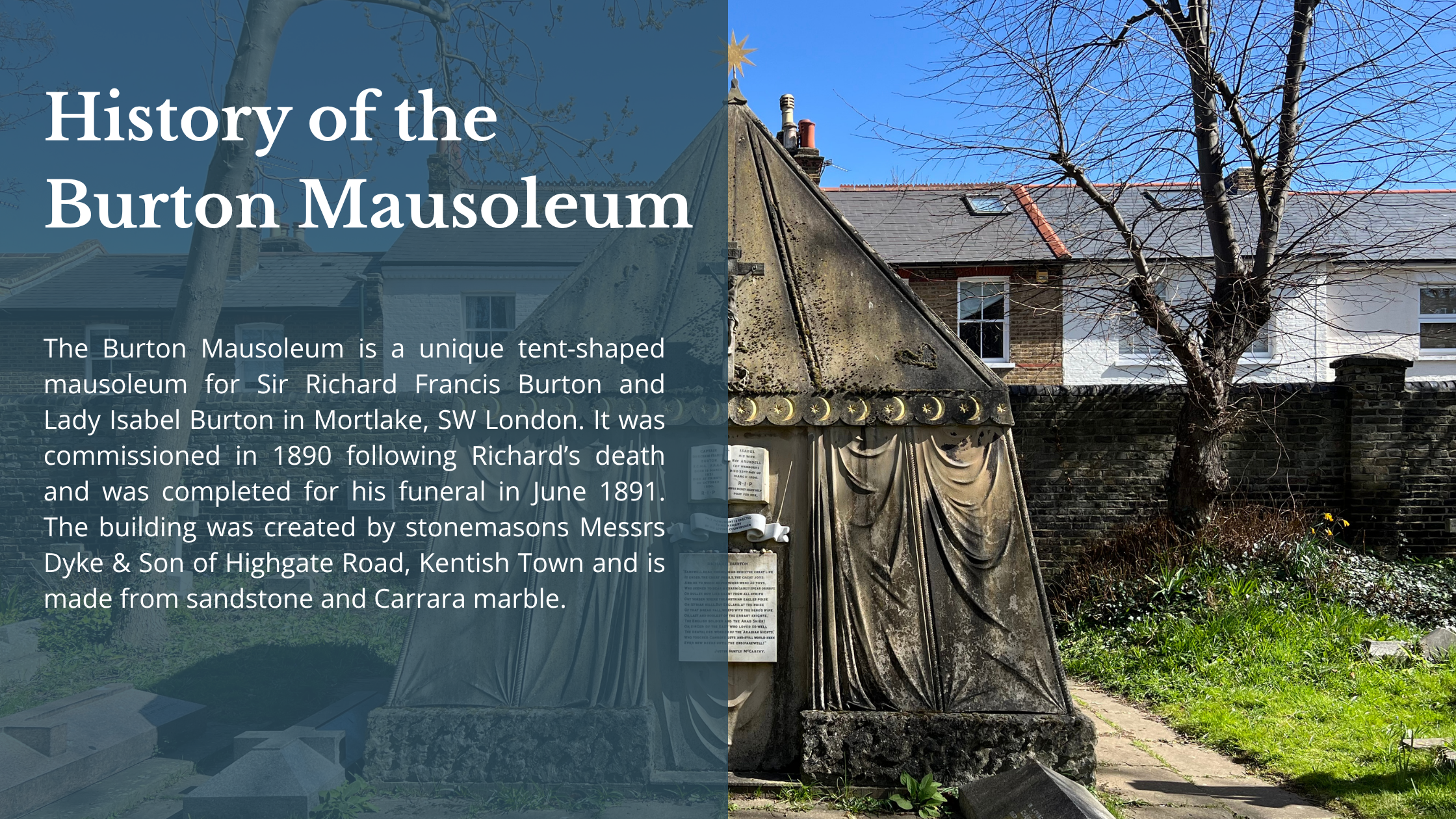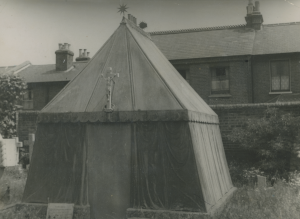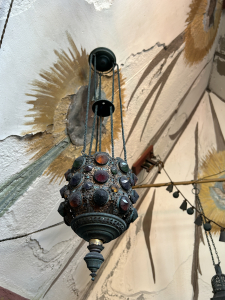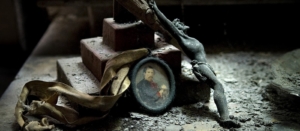History of the Burton Mausoleum

Before Richard’s death, the couple discussed plans for their final resting place. Richard initially wanted to be buried at sea, but Isabel wanted somewhere she could visit him. In that case, said Richard, “I should like us both to be in a tent, side by side”, as a reflection of the happy time they spent travelling through the Syrian desert.
The Burton Mausoleum is modelled after the tent the Burtons used in Syria in the style used by nomadic Bedouin peoples. Notice the draping canvas, the pelmet, and rope details on the sides of the building.
Messrs Dyke & Son were involved in the creation of the Burton Mausoleum from as early as December 1890. Lady Isabel wrote in the Morning Post: “I am already in communication with… Messrs. Dyke and Sons, sculptors, 49, Highgate-road, who are sending me designs”. The mausoleum is a style and scale unlike any of Messrs Dyke & Son’s usual work. You can learn more about the craftspeople who built the Burton Mausoleum here.

“It is no small compliment to Messrs. Dyke, that many people who come into the ground ask “why the canvas cover is not taken off”, and are quite astonished when they touch stone.”
– Lady Isabel Burton
There are clear cross-cultural influences at the Burton Mausoleum. The Burtons, in life and in death, were fascinated with different cultures, especially the Islamic world. Both Richard and Isabel demonstrated this interest in their early lives. This is reflected in the design, decoration, and objects inside the mausoleum. The crucifix above the door was required to stand above the Islamic star and crescent motifs on the pelmet in order to be placed in the Catholic churchyard of St Mary Magdalen.
The original design of the mausoleum included a stained-glass window in the east roof displaying Richard’s monogram. Isabel incorporated this feature as Richard hated to be in complete darkness. The window was vandalised and destroyed in the 1950s and was later replaced with the current clear glass window.
Another original feature was the stone door that allowed visitors to step inside. Isabel wanted the building to be accessible to anyone who wanted to pay their respects to her husband. She often visited the mausoleum, sitting inside to read and pray.
“You see, there is none of the horror of death about it… Sometimes, I sit here for hours at a time, with a book, and the little children, who are playing about, come in and say their short prayers and run off again”
– Lady Isabel Burton
In the 1950s the door was also vandalised and was subsequently bricked up. It was later redecorated to blend in with the rest of the building and the marble tablets were replaced.
In the 1970s, a ladder was installed behind the mausoleum to allow visitors to look through the window and see inside. A mirror now stands behind the door showing a reflection of the altar underneath the window.


There is a rich collection of objects housed inside the mausoleum, most of which date from the 19th century. Some objects, like some of the lamps, are recorded as being transported from the Burtons’ home in Trieste. Richard and Isabel collected objects on their travels, and their home was filled with pieces from around the world. The wreaths of flowers were likely created for Richard’s funeral, and the camel bells were purchased specifically for the mausoleum from West Asia or North Africa. Read more about what is inside the Burton Mausoleum.
The camel bells, that hang from the four corners of the ceiling, were a novel inclusion in the mausoleum’s design. Isabel wanted the tinkling of camel bells to be a feature of the building and had an electrical system, including a battery and dynamo, installed. The system would be triggered by the opening door. It was a truly sensory experience.
In 2023, Habitats & Heritage began Burton: Exploring Without Boundaries. This National Lottery Heritage Fund project aimed to conserve the building, produce updated interpretation, and reach broader audiences through an extensive outreach and education programme.

-

Burton: Exploring Without Boundaries
Support our work to conserve the Grade II* mausoleum of Sir Richard and Lady Isabel Burton.
£8,550.00 donated of £10,000.00 goal

Burton: Exploring Without Boundaries
Support our work to conserve the Grade II* mausoleum of Sir Richard and Lady Isabel Burton.
Habitats & Heritage are carrying out a National Lottery Heritage Fund supported project, Burton: Exploring Without Boundaries.
Habitats & Heritage are conserving the mausoleum of Sir Richard and Lady Isabel Burton at St Mary Magdalen’s Roman Catholic Church, Mortlake – a fascinating structure designed to resemble the tent that the Burtons had made for their travels across the desert in Syria. We will be reopening the mausoleum for the first time to the public in over fifty years. This has been made possible by National Lottery players.

